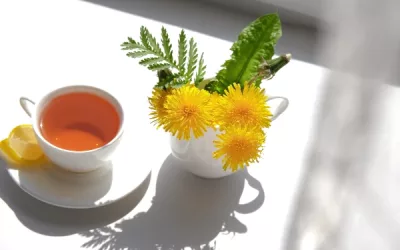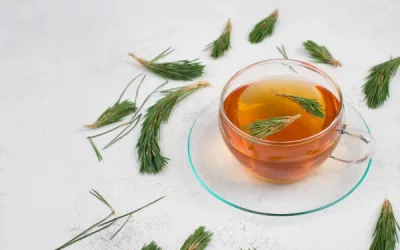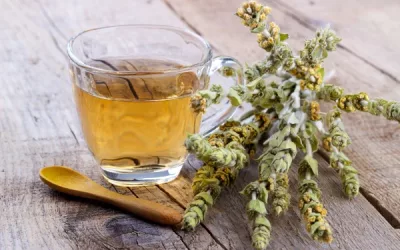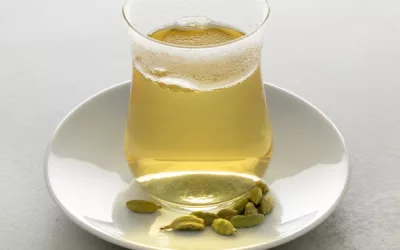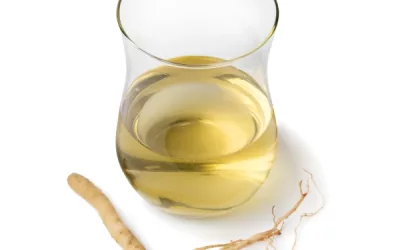Have you ever wondered how a simple cup of tea could unlock potential benefits ranging from improved immunity to altered states of consciousness? Welcome to the world of mushroom tea—a fascinating blend of ancient wisdom and modern health trends. As interest in natural remedies grows, understanding the benefits, preparation methods, and types of mushroom tea becomes increasingly vital. This article will guide you through everything you need to know about mushroom tea, helping you make informed choices for health and wellness.
Table of Content
- What is mushroom tea?
- How do you prepare mushroom tea at home?
- What types of mushrooms are commonly used in mushroom tea?
- Is psychedelic mushroom tea safe to consume?
- Can I make mushroom tea with dried mushrooms?
- What are the side effects of drinking mushroom tea?
- Common side effects of medicinal mushroom tea
- How can one mitigate adverse reactions to mushroom tea?
- Are there specific symptoms to watch for after consuming mushroom tea?
- What is the difference between medicinal and psychedelic mushroom tea?
- How do the effects of medicinal and psychedelic mushrooms differ?
- What are the legal implications of consuming each type?
- Can both types of mushroom tea be consumed together safely?
- Conclusion
What is mushroom tea?
Mushroom tea is a beverage made by steeping edible or medicinal mushrooms in hot water, similar to how one would prepare traditional herbal teas. The mushrooms can be fresh, dried, powdered, or even come in pre-packaged tea bags. The tea is often brewed using varieties like reishi, chaga, lion’s mane, or shiitake, each known for their distinct flavors and properties. Some people also add additional ingredients such as ginger, honey, or herbs to enhance the taste. The resulting tea typically has an earthy, rich flavor, which can vary depending on the type of mushroom used.
How can I identify high-quality mushroom products?
You want your mushroom tea to be top-notch, right? Quality goes beyond the pretty packaging.
Identifying high-quality mushroom products involves:
- Check the Source: Look for mushrooms sourced from reputable suppliers.
- Organic Certification: Ensures the absence of pesticides and synthetic fertilisers.
- Transparency: Brands that share information about their supply chain and production methods.
- Product Reviews: Real user reviews can provide insights into the quality and effects.
- Third-party Testing: Ensure that the tea has been tested for contaminants and potency.
Look out for these characteristics, and you’re more likely to get a product that’s both effective and safe. Remember, the magic lies in the details.
Are there any certifications to look for when buying mushroom tea?
Certifications are your best friends when distinguishing the high-quality mushroom tea from the questionable stuff.
Some key certifications to consider:
- USDA Organic: Ensures the product is free from synthetic additives and pesticides.
- Non-GMO Project Verified: No genetically modified organisms.
- Fair Trade Certified: Supports fair wages and sustainable farming practices.
- Kosher: Ensures compliance with dietary laws.
- GMP (Good Manufacturing Practices): Ensures products are consistently produced and controlled according to quality standards.
These certifications validate the quality and ethical standards of the mushroom tea you’re considering. Trustworthy certifications mean you’re not gambling with your health.
What mushrooms are used?
The specific mushrooms used can vary widely, and each type may offer different effects based on its unique properties. Here are some common types of mushroom tea:
1. Medicinal Mushroom Tea
- Reishi: Often called the “mushroom of immortality,” reishi is known for its immune-boosting properties and potential stress-reducing and anti-inflammatory effects.
- Chaga: This mushroom is believed to have antioxidant properties and is often used for its potential benefits in supporting the immune system.
- Lion’s Mane: Known for its potential cognitive and neurological benefits, lion’s mane is thought to support brain health and improve mental clarity and focus.
- Cordyceps: This mushroom is associated with energy enhancement and endurance, making it popular among athletes.
2. Psychedelic Mushroom Tea
- Psilocybin Mushrooms: These mushrooms contain the psychoactive compound psilocybin, which can induce altered states of consciousness, hallucinations, and profound psychological effects. They are sometimes brewed into tea to make them easier to consume and digest, often used in spiritual or recreational contexts.
3. Culinary Mushroom Tea
- In some cultures, edible mushrooms like shiitake or maitake are used to make savory teas, sometimes mixed with herbs or spices, for their flavor and health benefits.
Preparation of Mushroom Tea
- Ingredients: Typically involves dried or fresh mushrooms, water, and sometimes other ingredients like honey, lemon, or herbs to enhance flavor and benefits.
- Method: Mushrooms are either steeped in hot water or simmered to extract their active compounds. After straining the liquid, the resulting tea can be consumed hot or cold.
What specific health conditions can mushroom tea help with?
Mushroom tea can assist with a variety of health conditions, offering a natural way to support your body.
- Immune support: Reishi and chaga mushrooms contain beta-glucans which help bolster the immune system.
- Stress relief: Adaptogens like those found in reishi help the body adapt to stress and reduce anxiety.
- Cognitive enhancement: Lion’s mane mushrooms are known for their potential to improve memory and cognitive functions.
- Anti-inflammatory benefits: Flavonoids in mushrooms can help reduce inflammation in the body.
- Energy boost: Cordyceps mushrooms are famous for enhancing endurance and reducing fatigue.
These mushrooms not only address specific conditions but also contribute to overall health, making mushroom tea a versatile addition to your wellness routine.
In 16th-century Siberia, shamans used amanita muscaria, a type of mushroom, in their ceremonies. These practices were deeply rooted in spiritual and healing rituals. The shamans believed in the mushroom’s ability to connect them with the spirit world, seeking guidance and healing for their communities.
While modern users might not be seeking the same spiritual connections, the historical use highlights the long-standing belief in mushrooms’ powerful benefits.
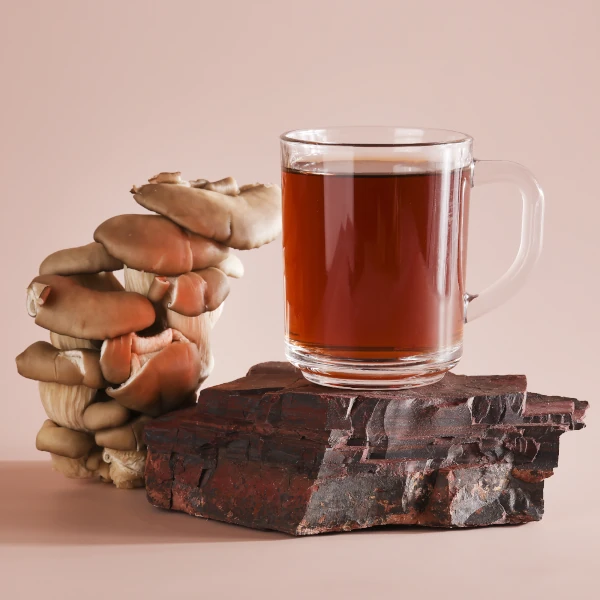
How do you prepare mushroom tea at home?
Preparing mushroom tea at home is simpler than you might think. You can use various mushrooms, each with unique flavours and health benefits. The process involves selecting the right type of mushroom, preparing it correctly, and then steeping it to extract its beneficial compounds. By following the steps below, you can enjoy a nourishing cup of homemade mushroom tea.
To help you get started, I’ve put together a table that outlines different types of mushrooms, their preparation methods, steeping times, and recommended serving sizes. This will help you choose the right mushroom for your needs and ensure you prepare it correctly.
Mushroom types and preparation methods
The table below provides a quick reference for preparing different kinds of mushroom tea. Each mushroom has its own unique preparation method, recommended steeping time, and ideal serving size. Use this table as a guide to make your perfect cup of mushroom tea.
| Mushroom Type | Preparation Method | Steeping Time | Serving Size |
|---|---|---|---|
| Reishi | Slice thinly, simmer | 30-45 minutes | 1-2 slices |
| Chaga | Grind into small pieces, simmer | 20-30 minutes | 1-2 tablespoons |
| Lion’s Mane | Slice fresh or dried, steep | 10-15 minutes | 2-3 slices |
| Cordyceps | Use whole or ground, steep | 10-15 minutes | 1-2 teaspoons |
| Turkey Tail | Cut into small pieces, simmer | 30-45 minutes | 1-2 tablespoons |
| Shiitake | Slice fresh or dried, steep | 5-10 minutes | 2-3 slices |
| Psilocybin (Magic) | Crush or chop, steep | 10-15 minutes | 1-3 grams |
| Maitake | Slice fresh or dried, steep | 5-10 minutes | 2-3 slices |
Reishi mushroom tea preparation
Reishi mushroom is known for its adaptogenic properties, helping manage stress and support the immune system. To prepare a cup of reishi tea:
- Preparation Method: Slice the reishi mushroom thinly.
- Steeping Time: Simmer the slices for 30-45 minutes to extract the active compounds.
- Serving Size: Use 1-2 slices per serving.
Reishi tea has a bitter taste, so you might want to add a bit of honey or lemon to enhance the flavour.
Chaga mushroom tea preparation
Chaga mushroom is praised for its antioxidant properties. Preparing chaga tea involves:
- Preparation Method: Grind the chaga into small pieces.
- Steeping Time: Simmer for 20-30 minutes.
- Serving Size: Use 1-2 tablespoons of ground chaga.
Chaga tea has a slight vanilla flavour, making it enjoyable on its own or with added spices like cinnamon.
Lion’s mane mushroom tea preparation
Lion’s mane is celebrated for its potential cognitive benefits. Here’s how to prepare it:
- Preparation Method: Slice the fresh or dried lion’s mane.
- Steeping Time: Steep the slices for 10-15 minutes.
- Serving Size: Use 2-3 slices per serving.
Lion’s mane tea has a mild, earthy taste, making it a pleasant drink any time of day.
During the Ming Dynasty, reishi mushrooms were highly valued for their medicinal properties. Emperors would commission herbalists to cultivate and prepare reishi tea to ensure their longevity and well-being. The practice of drinking reishi tea was so sacred that it was often reserved for royalty and the elite, showcasing its importance in traditional Chinese medicine.
I remember my first attempt at making chaga tea. I was intrigued by its reputation as the “King of Mushrooms.” I ground the chaga, simmered it, and the result was a rich, earthy brew. Adding a touch of cinnamon transformed it into a comforting drink that became a staple in my winter routine. The experience showed me how easy it was to incorporate these powerful mushrooms into my daily life.
What types of mushrooms are commonly used in mushroom tea?
So, you’re curious about what kinds of mushrooms you can brew into a magical pot of mushroom tea, eh? Well, buckle up because we’re diving into a mycological wonderland. From boosting your immune system to taking a trip to a different dimension, mushrooms have quite a bit to offer.
- Reishi: The “Mushroom of Immortality” packs an immune-boosting punch, helps with stress, and is supposedly a sleep promoter too. Also, it tastes like dirt and wood had a baby. You’ve been warned.
- Chaga: The king of antioxidants, Chaga is all about giving your immune system a boost. Think of it as nature’s black gold (not oil, the mushroom) with a slightly bitter yet earthy flavour.
- Lion’s Mane: This fluffy mushroom is said to boost brain health and improve your memory. As for taste? Think seafood minus the fishy smell—kind of like crab or lobster but in a mushroom.
- Psilocybe Cubensis: If you’re interested in going on a psychedelic trip, this is the shroom for you. It’s known for its mind-altering effects and, honestly, it tastes pretty bland. But who cares about flavour when you’re riding the rainbow?
- Shiitake: This one’s a classic in Asian cuisine and brings a meaty, umami flavour to your tea. It’s great for boosting your immune system and overall well-being.
But hey, not all mushrooms are made for your teacup. Some can land you in a world of hurt or a hospital bed. Avoid Amanita phalloides (Death Cap) like the plague unless you enjoy liver failure. You do you, but I’m guessing you probably don’t.
How do the flavours differ between these mushrooms?
Flavour is where things get personal. Each mushroom brings its own unique zest to the tea:
- Reishi: Imagine drinking a cup filled with the essence of an ancient forest floor. It’s bitter with a hint of, well, tree bark.
- Chaga: This one’s like sipping on a mildly astringent, earthy broth. Kind of like the fancy herbal teas your hipster friend swears by.
- Lion’s Mane: A subtle seafood-like taste. Think of drinking the ocean but without all the salt and fish.
- Psilocybe Cubensis: Surprisingly bland. It’s like drinking a cup of ‘meh,’ but the trip is what you’re really in it for.
- Shiitake: Brings that umami punch, like a slice of heaven from a stir-fry. It’s savoury, rich, and a bit nutty.
From woody to seafood-like, each flavour profile can cater to different taste buds.
Are there any mushrooms that should be avoided in tea preparation?
Not all mushrooms get a golden ticket to the tea party. Some are more like uninvited guests that could ruin your life—or at least your liver.
- Amanita Phalloides (Death Cap): Just say no. This one can kill you, literally.
- Galerina Marginata: Another toxic one; it looks innocent but isn’t anything you want near your teapot.
- Webcaps: Contains orellanine, which is not going to do your kidneys any favours.
- Jack-O’-Lantern Mushroom: It glows in the dark and will have you glowing green, metaphorically speaking. Best used for Instagram photos, not ingestion.
- False Morels: They might look close to the real deal, but these can cause severe gastrointestinal issues and even death.
Knowing which mushrooms to avoid can be the difference between a delightful afternoon tea and a trip to the emergency room.
People have turned to mushrooms for medicinal purposes for centuries. Take the tale of Otzi the Iceman, discovered in the Alps in 1991. When scientists studied his well-preserved body, they found two types of mushrooms among his belongings.
Not just any mushrooms—one was a Birch Polypore, known for its antibiotic properties, and the other was a type of tinder fungus, likely used to start fires. Even 5,300 years ago, Otzi knew the power that fungi held.
So, whether you’re looking to boost your health or take a psychedelic journey, mushrooms have proven their worth over millennia. Just make sure to choose the right kind for your cup of tea.
Is psychedelic mushroom tea safe to consume?
Psilocybin, the magical component in these mushrooms, is what catalyses the mind-bending trips. However, like anything fun, moderation is key. Dosage, legality, and mental health considerations are paramount. Knowing these will make sure you don’t land in a pickle while chasing rainbows.
Consuming psychedelic mushrooms, including in the form of tea, can have significant mental and physical effects, including potential psychological risks and legal consequences. Individuals with pre-existing mental health conditions, those on medication, or those with a history of substance abuse should consult a healthcare professional before considering use. Always ensure to research and comply with local laws regarding the possession and use of psychedelic substances.
Use of these substances is done at one’s own risk, and it is advisable to do so in a safe, controlled, and supportive environment. The author and publisher disclaim any responsibility for adverse effects resulting from the use or application of the information contained in this discussion.
What are the potential risks of consuming psychedelic mushroom tea?
First off, let’s address the mushrooms in the room: consuming psychedelic mushroom tea isn’t without risks. Yes, they can send you to the moon, but there’s a chance you might crash-land:
- Psilocybin Effects: This compound can induce hallucinations, changes in perception, and a warped sense of time. These effects are not always pleasant.
- Overdosing: Too much psilocybin can lead to a “bad trip”, marked by severe anxiety, paranoia, and confusion.
- Legal Issues: Depending on where you are, possessing and consuming psychedelic mushrooms can be illegal. Check your local laws to avoid any unwanted rendezvous with the police.
- Mental Health: Those with a history of mental illness should steer clear. Psilocybin can exacerbate conditions like schizophrenia or bipolar disorder.
- Physical Side Effects: Nausea, vomiting, and dizziness are your less enthusiastic friends that might show up uninvited.
So, yes, it’s a whirlwind, but not always the good kind.
How can one ensure a safe experience with psychedelic mushrooms?
Safety first, my daring adventurer. Ensuring a safe trip requires more than just crossing your fingers and hoping for the best. Here’s your roadmap:
- Start Small: Don’t chug a gallon of this tea. Begin with small doses and see how your body reacts.
- Set and Setting: Your environment and mental state play huge roles. Choose a comfortable, familiar place and be in a positive frame of mind.
- Have a Sitter: Not the babysitting kind but someone who can watch over you to ensure you don’t wander off a cliff or start an impromptu revolution.
- Stay Hydrated: Water is your buddy. Keep yourself hydrated to fend off some of the physical discomforts.
- Educate Yourself: Knowledge is power. Understand the type of mushrooms you’re using and their effects. Not all mushrooms are created equal.
Taking these precautions can turn a potentially chaotic journey into a pleasant stroll through wonderland.
Are there specific populations that should avoid psychedelic mushroom tea?
Spoiler alert: Not everyone should jump on the psychedelic bandwagon. Some should steer far, far away:
- Pregnant or Nursing Women: Carrying another life? Mushroom tea is a strict no-no.
- Individuals with Mental Health Conditions: People prone to severe anxiety, psychosis, or depression should avoid. It’s a mental minefield.
- Young Adults: Under 18? Stick to your hot chocolate and herbal teas. Your brain is still cooking, no need for extra ingredients.
- Those on Certain Medications: Psilocybin might interact negatively with antidepressants or other mental health medications.
- People with a History of Substance Abuse: Risk of addiction or misuse is too high. You don’t want to replace one problem with another.
Knowing who should avoid it can prevent a whole lot of unnecessary drama.
Once upon a time… In the 1960s—long before Netflix binges—a Harvard psychologist named Timothy Leary took the world on a psychedelic trip of its own. He advocated for the conscious use of psychoactive substances, promoting them as a means to achieve spiritual enlightenment.
Leary wasn’t just any dude; he became a countercultural icon, urging people to “turn on, tune in, drop out”. Though he faced a slew of legal battles and institutional pushback, his work laid the foundation for modern psychedelic research.
And look at us now—still curious about the next great adventure in a cup of tea. Leary’s antics sparked a movement and reminded us all that safety and knowledge go hand in hand when venturing into the unknown.
So, before you dive into the rabbit hole, remember: a little caution goes a long way. Sip wisely, dear reader.
Can I make mushroom tea with dried mushrooms?
Absolutely, you can whip up a delightful mushroom tea with dried mushrooms. Let’s dive into the nitty-gritty so you don’t make a cup of miserable mushroom water.
First off, dried mushrooms are the result of removing all the moisture from fresh mushrooms. They may look like nature’s forgotten snack, but with the right techniques, they can transform into a potent and flavourful tea. When it comes to drying, there are a few popular methods: air drying, using a food dehydrator, or your trusty oven. Each has its quirks, but the aim is to preserve the mushrooms’ essence without turning them into chewy shoe leather.
Now, for rehydration, it’s as simple as soaking your dried fungi in hot water. Think of it as mushroom resurrection. Rehydration not only brings the mushrooms back to life but gets them ready to release all that earthy goodness into your tea. You’ll find the tea’s flavour can be enhanced with a splash of lemon, a dash of honey, or even a slice of ginger to jazz things up.
When it comes to potency, dried mushrooms are your go-to for a concentrated cup of tea. They work through the same magic as spices – less water means more intense flavour and benefits.
Speaking of storage, if you’re not planning on drinking mushroom tea morning, noon, and night, store them in an airtight container, away from light and moisture. Done right, they’ll be ready whenever the tea craving hits.
How does the potency of dried mushrooms compare to fresh?
Dried mushrooms pack a punch compared to their fresh counterparts.
- Concentration: Drying mushrooms removes water, concentrating the bioactive compounds.
- Longer shelf-life: Fresh mushrooms spoil quickly, while dried ones can last much longer, maintaining their potency.
- Rehydration doesn’t dilute: Rehydrating restores their original form but retains the concentrated benefits.
- Easy to measure: Dosage is simpler to control with dried mushrooms, ensuring consistent potency in each brew.
When you make tea from dried mushrooms, you’re essentially getting a more potent hit of everything the mushroom offers. So, next time you’re thinking of fresh mushrooms, remember, dried is where the power lies.
What are the best methods for rehydrating dried mushrooms?
Rehydrating dried mushrooms is like giving them a spa day.
- Soaking in hot water: This is the go-to method. Just let them soak for about 20-30 minutes.
- Simmering: If you’re in a hurry, simmer them gently in hot water for about 15 minutes.
- Steeping: It’s the slow method. Fill a bowl with cold water and let them soak overnight.
- Using broth: If you want extra flavour, soaking them in broth instead of water is a fantastic idea.
- Microwave method: Pop them in a bowl with water and microwave for a couple of minutes. Quick and easy!
Each of these methods revitalises the mushrooms and gets them ready to release their full potential when brewed into tea. So, whichever way you choose, you’re in for a treat.
Can dried mushrooms lose their health benefits over time?
Yes, but it’s a slow burn. Dried mushrooms can lose some of their health benefits over time if not stored properly.
- Air and light exposure: These can degrade the mushrooms’ bioactive compounds.
- Moisture: Humidity is their arch-nemesis. It can lead to mould and spoilage.
- Temperature fluctuations: Extreme conditions can affect their potency.
- Cross-contamination: Storing them near strong-smelling foods can alter their taste and benefits.
- Long-term storage issues: After a year or so, dried mushrooms may start to lose their efficacy.
Store them well, and you’ll have a trusty tea ingredient that retains its beneficial properties for months. Treat them like a treasure, and they’ll keep rewarding you with every cup.
Back in the days of Tsarist Russia, they believed in the power of mushrooms so much that they preserved them rigorously. One Russian Princess, Olga, had a secret stash of dried mushrooms that she claimed kept her youthful.
She would sip on her precious mushroom tea daily, swearing by its vitality-boosting properties. Her secret? Storage in dark oak cabinets and meticulous rehydration methods, passed down through generations, ensuring the potency and flavour remained untouched.
She might have been on to something because she outlived her sceptical counterparts by quite a margin. So, treat your mushrooms with royal care, and they just might return the favour.
What are the side effects of drinking mushroom tea?
Ah, mushroom tea – that trendy concoction everyone seems to be raving about on social media. Whether you’re into it for the medicinal benefits or you’re dabbling in the psychedelic experience, you might want to know about the potential side effects before taking the plunge. Let’s cut to the chase and dive into the nitty-gritty.
Mushroom tea can come with quite a few side effects, and they vary depending on the type – medicinal or psychedelic. Here’s a heads-up:
Common side effects of medicinal mushroom tea
Alright, let’s start with medicinal mushroom tea. You know, the kind you drink because you heard it can boost your immune system or help you chill out.
- Gastrointestinal issues: Sometimes, it feels like your stomach is staging a protest. Nausea, bloating, and even diarrhoea can make an appearance.
- Allergic reactions: Yes, mushrooms have a grudge against some people. If you’re unlucky, you might experience itching, rashes, or even difficulty breathing.
- Interactions with medications: Medicinal mushrooms can play havoc with certain medications, particularly blood thinners and immunosuppressants.
- Headaches: No one likes them. Certain types of mushrooms, such as Reishi, might give you a pounding headache.
The medicinal mushrooms like Reishi, Chaga, and Lion’s Mane come with these quirks. They do have impressive benefits, but knowing these side effects helps keep things balanced.
How can one mitigate adverse reactions to mushroom tea?
Okay, side effects don’t mean you need to ditch your new favourite tea altogther. Here’s how you can dodge some of those reactions:
- Start slow: Don’t chug a full pot on your first go. Begin with a small dose and see how your body takes it.
- Check for allergies: Like a new relationship, make sure it’s not going to cause you grief. Know what you’re allergic to.
- Hydrate: Sometimes, water isn’t just for fish. Drink plenty of it to keep those side effects at bay.
- Eat beforehand: Having some food in your stomach can lessen the impact of gastrointestinal issues.
- Avoid mixing: Be cautious about mixing your mushroom tea with other medications or supplements.
Taking these steps can help you enjoy your mushroom tea experience without regretting it later.
Are there specific symptoms to watch for after consuming mushroom tea?
Now, you need to play detective (sort of). Be on the lookout for these symptoms to avoid any nasty surprises.
- Nausea and vomiting: A bit of a buzzkill, but common, especially with those psychedelic varieties.
- Skin rashes: If you start itching like mad or see red patches, it’s probably an allergy.
- Dizziness and confusion: More common with psychedelic tea, but can happen with medicinal mushrooms too.
- Trouble breathing: Put down the cup and call for help – this could be an allergic response.
- Changes in heart rate: If your pulse starts doing the cha-cha, especially if it’s irregular, you might need a professional’s opinion.
Knowing what to watch for lets you be prepared and react promptly if things go south.
In the 1950s, author and ethnomycologist Gordon Wasson introduced psychedelic mushrooms to the West, a journey that eventually led to the modern popularity of mushroom tea. Imagine going on a quest across Mexico, as he did, braving jungles and mountains to experience Mazatec rituals. Wasson’s adventure popularised the spiritual and recreational use of these fungi, contributing to the fascination that continues today. His work, however, also demonstrated the importance of understanding and respecting the power of mushrooms, both magical and medicinal. So, if you’re venturing into the world of mushroom tea, remember: explore with curiosity, but tread with care.
What is the difference between medicinal and psychedelic mushroom tea?
Medicinal and psychedelic mushroom teas aren’t just two brews in your herbal tea collection. They’re from completely different realms of the fungi kingdom with diverse uses, effects, and legal statuses. Buckle up, because we’re diving into a world where the only thing these two have in common is the fact that they both happen to be, well, mushrooms in hot water.
Medicinal mushroom tea is like the well-behaved, straight-A student of the mushroom family. It’s your Reishi, Chaga, Lion’s Mane, and Turkey Tail – the fungi you’d introduce to your parents. These mushrooms are packed with active compounds like beta-glucans and polysaccharides that give your immune system a high-five, boost your energy, and improve brain function without making you see colours that aren’t really there.
Psychedelic mushroom tea, on the other hand, is the wild cousin. It’s made from psilocybin mushrooms, commonly known as magic mushrooms. These contain the hallucinogenic compound psilocybin, which can make a simple cup of tea turn into a ticket to an entirely different dimension. It’s intended for the adventurous souls looking for spiritual awakening, mental clarity, or just an otherworldly experience.
How do the effects of medicinal and psychedelic mushrooms differ?
Medicinal mushrooms:
Medicinal mushroom teas won’t send you into outer space, but they will:
- Improve your immune system like a personal bodyguard.
- Enhance cognitive function, sharpening your brain.
- Promote stress relief, making you a zen master.
- Boost energy, as if you had a supercharged battery.
- Support overall wellness, being the Swiss Army knife of health.
Psychedelic mushrooms:
Psychedelic mushroom teas, on the other hand, are a different beast:
- Create powerful hallucinations that make Alice in Wonderland seem real.
- Heighten your senses to Hulk-like levels.
- Spark deep introspection that could turn you into the next Nietzsche.
- Provide therapeutic effects, helping with serious mental health issues like PTSD and depression.
- Connect you with mystical or spiritual experiences (Don’t worry, no one’s going to ask if you’re “finding yourself”).
Medicinal mushrooms are there for the everyday health boost, while psychedelic mushrooms are there when you want to touch the fabric of the universe.
What are the legal implications of consuming each type?
Medicinal mushrooms:
Medicinal mushrooms are generally the goody-two-shoes when it comes to legality:
- Legal in most parts of the world – because who hates immune-boosting wonders?
- Easily accessible in stores and online – you don’t have to meet a sketchy guy in an alley.
- Usually come with recommendations on dosage – no need to add “mushroom tea prep” to your CV.
Psychedelic mushrooms:
Psychedelic mushrooms, not so much:
- Illegal in many countries, so getting caught means you might end up explaining yourself to a judge.
- Stricter regulations, with some countries allowing use under supervised settings (We’re looking at you, Netherlands).
- Can carry kind of heavy penalties – think fines and potential jail time in worst-case scenarios (yikes).
While medicinal mushrooms are generally seen as friends of the law, psychedelic mushrooms are more like that friend you had in school who was constantly in detention.
Can both types of mushroom tea be consumed together safely?
Let’s get one thing straight: just because two things are healthy in their own right doesn’t mean they should party together in your teapot.
- Combination could amplify effects – and not always in a good way.
- Results may vary – making it a game of ‘Will I just feel super zen or see unicorns in my living room?’
- Medicinal benefits may get overshadowed by psychedelic trip – essentially burning your candle at both ends.
- Lack of research – science hasn’t done a double-blind study on your peculiar tea habits yet.
- Potential for adverse reactions – let’s just say you don’t want to call an ambulance over tea.
In 1958, a certain author named R. Gordon Wasson took a trip to Mexico to meet a shaman named María Sabina. Now, Wasson didn’t just have a delightful cup of Reishi tea. No, he chugged down some psychedelic mushroom tea and, boy, did he have a tale to tell.
This wasn’t any ordinary story; his experience influenced the entirety of Western culture’s fascination with magic mushrooms. His writings on the mystical journey later inspired none other than Timothy Leary, paving the way for the counterculture movement of the 1960s.
Safe to say, Wasson’s trip made an indelible mark on history – and probably served as a lesson in why you need to know your mushrooms.
Cheers to mushroom tea, one sip at a time; know your brew, and know it well!
Conclusion
In exploring the realm of mushroom tea, we’ve uncovered a rich tapestry of health benefits, preparation techniques, and safety considerations. From immune support bolstered by beta-glucans and antioxidants to cognitive enhancement through adaptogens and flavonoids, the advantages of integrating mushroom tea into our wellness routines are compelling.
Understanding which mushrooms—like reishi, chaga, or psilocybe cubensis—offer unique properties and flavours adds another layer of appreciation for this ancient beverage. It’s essential to distinguish between the calming effects of medicinal varieties and the psychedelic journeys associated with specific species, as the implications for our mental health and legal standing vary significantly.
Our discussion also highlighted practical steps for making mushroom tea at home, including drying methods for enhancing potency and specific preparation techniques to maximise flavour and benefits.
As we dive deeper into this herbal practice, further exploration into sourcing quality ingredients can lead to superior experiences—whether we seek a soothing cup for stress relief or a more profound psychedelic journey.
Reflecting on my own encounters with mushroom tea, I am consistently amazed by its potential. Each cup offers not only a moment of relaxation but also a gateway to ancient wisdom, connecting us to nature and its bountiful offerings. As we tread this path, I invite you to ponder: in a world that often rushes us forward, what treasures await us in the mindful ritual of sipping mushroom tea? Through understanding and respect, we can unlock not just health benefits but perhaps even a deeper connection to ourselves and the world around us.
Resources
- A review of mushrooms in human nutrition and health
- Edible Mushrooms: A Comprehensive Review on Bioactive Compounds with …
- Therapeutic applications of mushrooms and their …
- Self-reported negative outcomes of psilocybin users: A quantitative textual analysis
- How to Take Shrooms Safely Psychedelic Support
- Mushrooms – The Nutrition Source


